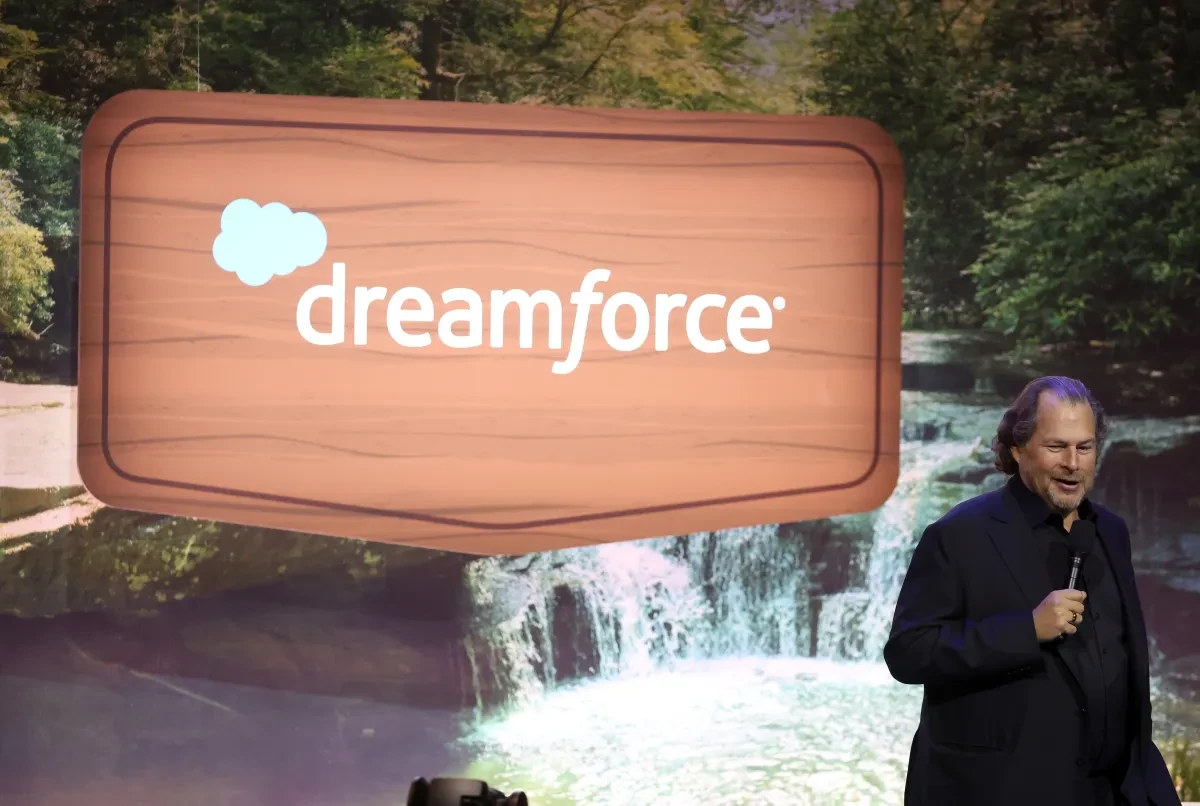New York
Independent Software Vendors
Salesforce Unveils Agentforce 360 in Bold AI Push: What It Means for Enterprise Software
By : Syed Owais Date:October 13, 2025
Ready to Share Your Story or Recommend a Leader?
Join our mission to connect and empower entrepreneurial ecosystem.
Salesforce is making a major leap in the enterprise AI landscape with the launch of Agentforce 360, a unified platform that promises to integrate humans, data, and autonomous agents across its entire cloud ecosystem. With competing vendors, startups, and cloud giants jockeying for dominance in AI-powered workflows, this move signals how high the stakes have become.
Below, we dive deep into what Agentforce 360 is, its innovations, the strategic implications, and what this means for companies looking to adopt AI agents at scale.
1. What Is Agentforce 360?
Agentforce 360 is Salesforce’s next-gen “agentic AI” platform. It connects AI agents, humans, and enterprise data on a trusted, governed system. In Salesforce’s own framing:
“Agentforce 360 connects humans, agents, and data on one trusted platform, helping every employee and every company achieve more.”
It builds off previous versions of Agentforce (initially launched in 2024) and evolves toward full-scale enterprise deployment, not just AI assistants, but agents capable of reasoning, orchestrating actions, and scaling across workflows.
Because it’s deeply integrated with Salesforce’s core stack (Customer 360, Data Cloud, MuleSoft, Flow, etc.), Agentforce 360 is marketed as a seamless extension of the platform rather than a bolt-on.
2. Key Innovations & Feature Highlights
Here’s what differentiates Agentforce 360 from prior versions and competitor offerings:
- Agent Script (Expression Language + Logic Control)
A new “if/then” style expressive layer (Agent Script) lets developers define deterministic behavior, logic flows, and fallback paths, adding predictability and guardrails to LLM-driven agents. - Reasoning Engines & Hybrid Intelligence
Agents will leverage a blend of deterministic logic, LLM inference, and context-aware planning. Salesforce suggests the use of its Atlas Reasoning Engine to break down prompts into structured tasks. - Agentforce Builder / Low-Code Studio
A unified interface for building, testing, and rolling out agents. It supports both no-code logic and advanced customization. Built-in observability and testing tools help enterprises move agents to production. - Command Center & Observability
With Agentforce 3, the new Agentforce Command Center adds a unified “pane of glass” for tracking agent metrics, health, and performance. - Plug-and-Play Integrations (AgentExchange, Open Standards)
Salesforce is pushing openness via Model Context Protocol (MCP) and its AgentExchange marketplace — enabling third-party agent modules built by partners. - Slack as an Agent Hub
Salesforce plans to embed agent workflows directly into Slack, leveraging the collaboration tool as a conduit for intelligent agent interactions. - Global Availability and Rollout
Agentforce 360 is launching globally across Salesforce clouds, with the agent framework intended to be exposed to all business units over time.
3. The Strategy Behind the Move
Why now, and why so aggressively? A few strategic drivers:
- Differentiation in a Crowded Market
AI agents are a core battlefield in enterprise AI. Salesforce is positioning itself not merely as a vendor embedding AI features, but as a platform for agentic systems, making it harder for point solutions to compete. - Leveraging Platform Synergies
Because Salesforce already serves as the backbone for many enterprises’ CRM, processes, and integrations, adding agentic layers that tap into the same data and flows gives it an advantage over third-party entrants. - Guardrails & Trust
One of the biggest impediments for enterprise AI adoption is governance, compliance, and predictability. Salesforce is explicitly embedding controls and transparency layers (Agent Script, observability, hybrid reasoning) to combat “hallucination” risks. - Economies of Scale & Network Effects
Through AgentExchange and partner modules, Salesforce aims to build a marketplace of agents that enterprises can drop in, reducing the barrier to entry and accelerating adoption. - Investor & Market Signal
This is also a signal to investors: Salesforce is reasserting itself in AI, not as a follower, but as a platform going all in. Its $15 billion investment in San Francisco over 5 years underlines this commitment.
4. Use Cases, Risks & Adoption Challenges
Use Cases to Watch
Agentforce 360 is designed for broad applicability across enterprise domains:
- Customer Service / Support: autonomous handling of routine requests, escalation handoffs, knowledge retrieval
- Sales / SDR Agents: lead qualification, outreach, follow-ups
- Sales Coaching: simulated role-playing, deal guidance
- E-commerce / Retail Agents: guided shopping bots, inventory alerts
- IT / HR / Internal Agents: internal helpdesk, onboarding, task orchestration
These are all plausible because the agent layer connects to underlying data and systems (CRM, external APIs, workflows) via the Salesforce stack.
Risks & Challenges
- Agent Hallucinations & Accuracy
Even with logic layers, LLMs can misinterpret or generate incorrect outputs. Robust oversight is necessary. - Integration Complexity
Enterprises often have legacy systems, custom logic, and edge cases that a standard agent may not cover. - Change Management & Adoption
Getting teams to trust and rely on agents requires cultural change. Adoption can plateau if early agents underperform. - Regulation & Privacy
Operating agents that move data and make decisions raises regulatory and compliance risks, especially across geography-specific rules. - Cost vs ROI Uncertainty
The cost of developing, training, maintaining agents vs the actual savings needs to be justified operationally.

Syed Owais
Founder & Fractional CBO - Who loves to deliver value over hype. Aiming to build a no-BS community for founders (by founder), investors, venture capitalists, accelerators and journalists.
Subscribe
- Gain full access to our premium content
- Never miss a story with active notifications
- Browse free from up to 5 devices at once











